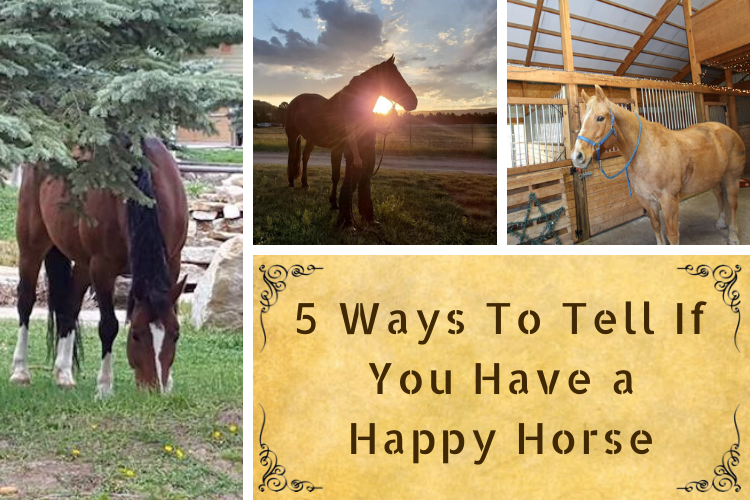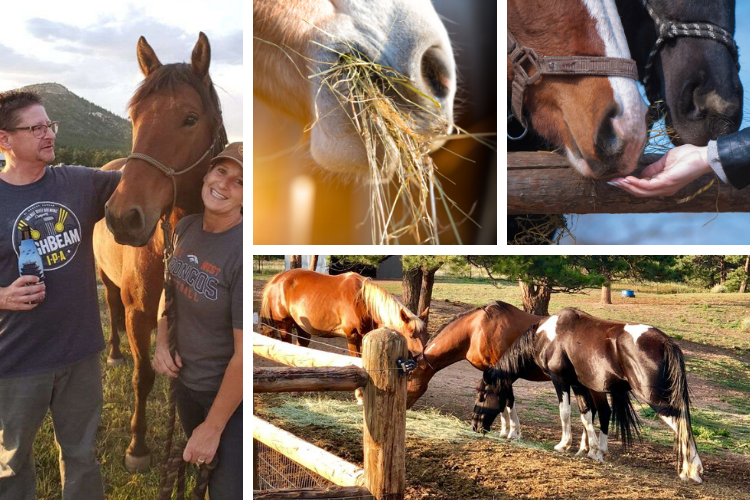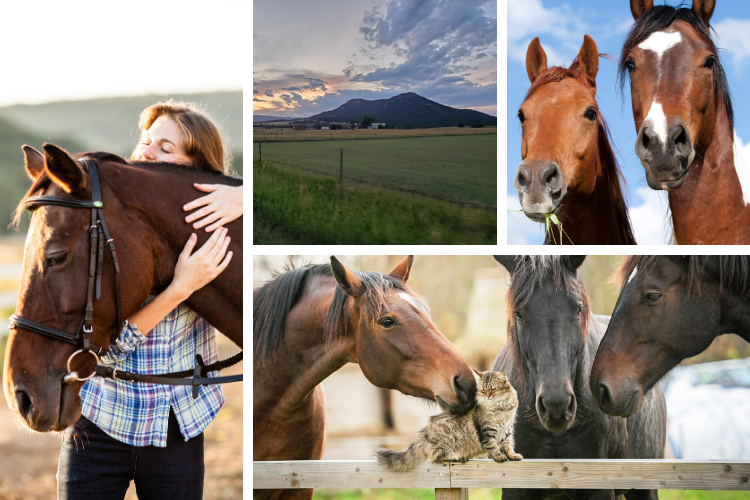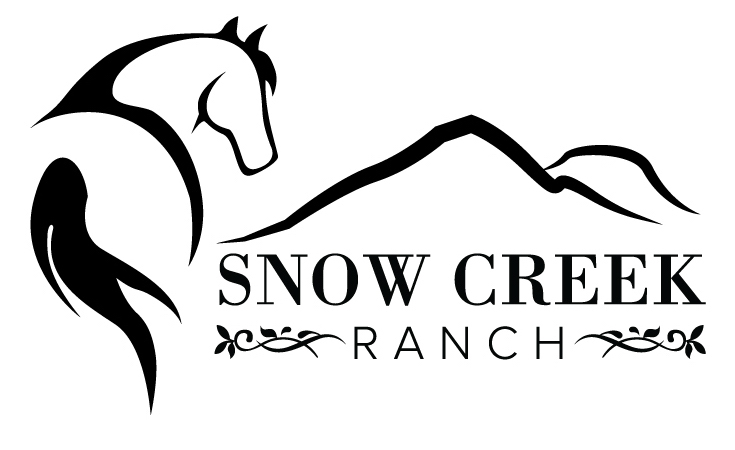5 Ways to Tell If You Have a Happy Horse

And How to Make Sure They Stay That Way
One of the best things about owning a horse (or any animal, really!) is knowing that you’re raising and boarding a happy horse: physically healthy, well nourished, engaged with her surroundings.
But how do you know if your horse is really happy? At Snow Creek Larkspur Equine Services, we’ve been working with horses literally for decades. And we’ve noticed that while horses (just like any other animal) have individual personalities, they also have some common behaviors and characteristics that we can look at to assess whether or not they’re a healthy and happy horse.
Characteristics of a Happy Horse
1 Bright Eyes – Horses are just like us in a lot of ways; for example, their eyes are the windows to their souls. When a horse is sad or depressed it really shows when their eyes become glassy and distant. We call it “the stink eye.” A happy horse is bright eyed and will engage with you and their surroundings.
While you need to be fairly familiar with horses to identify when they’re stressed, when you’ve been around horses as long as we have, the eyes have it.
2 Engaged & Aware of Surroundings – A happy horse will interact with you, the other horses in the paddock, pasture or barn, and with their environment. When you approach them, they’ll nuzzle your hand or let you feed them carrots or apples. They seem happy to let you ride. They rear and paw the ground playfully.

3 Active & Relaxed – Keep an eye on your horse’s nostrils and tail, as well as their overall demeanor. When they’re happy, their whole physical appearance will seem relatively relaxed. An unhappy horse will tense their nostrils and whip their tail. A happy horse will let their nostrils become soft and round rather than draw them thin and tight.
4 Bonding & Mutual Grooming – Horses are more social than you might expect. When they’re happy they play together, they race, and they groom each other. When you see a horse who seems to be a loner, that could mean they’re ill or have some kind of injury, or even that they’ve been pushed out of their group.
At Snow Creek Larkspur, we have a community of happy horses who play, run, and graze together in our large, sunny pastures.
5. Stable Behavior – Watching the way your horse behaves in the stable is another way to tell how happy your horse is. Take a look at their droppings: they should be regular, round, and of a normal amount. A stressed horse often has loose or runny stools Do they share a feeder? Secure horses share their food. We make it easier for horses to engage socially like this by providing a large round feeder where the horses can congregate and be social while they feed.
They will have relatively smooth and contained bedding because happy horses are not restless. They will not do a lot of crib-biting or box walking (although these behaviors can also be a sign of stress if you observe them in concert with some of the other behaviors we’ve called out here.

Probably the most important common theme that all these behaviors have is that to correctly assess them you need to be knowledgeable about, and experienced with horses, and you have to interact with and observe them.
At SCR, we couldn’t be prouder of how happy our horses are. They’re bright eyed and engaged. They have a pep in their step. They’re not slumped or withdrawn.
There are a lot of reasons that our horses are happier than you’ll see at a lot of other barns. We don’t keep your horse cooped up in a barn or a stall all day. Our horses have lots of turnout (and easy access to trail riding), so they get lots of exercise on our acres and acres of pastures with lots of beautiful, natural terrain.
